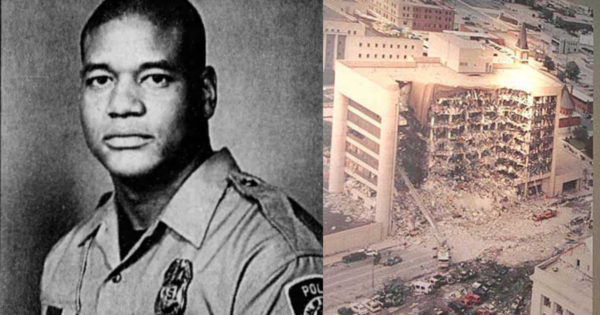
Terrance Yeakey, a sergeant at the Oklahoma City Police Department, was the first to arrive at the scene of the Oklahoma City Bombing. His heroic actions that day saved the lives of multiple people, who he pulled from the rubble after the explosion. His death remains a controversial mystery, for good reason.
Terrance Yeakey was born on November 9, 1965. He served in the US military and joined the Oklahoma City Police Department in 1989. Yeakey was the first to arrive when an explosion struck the Alfred P. Murrah Federal Building on April 19, 1995.
His family and friends say that he saw something disturbing at the site that day, prompting Yeakey to reject the government narrative of the attack and conduct a private investigation. Yeakey did not discuss what he saw that day, and even kept specific details of his investigation from his close relatives and friends.
“It’s not true. It’s not what they are saying. It didn’t happen that way,” said Yeakey.
He then began to receive strange and threatening phone calls at his home by unknown persons. Yeakey told people close to him that he believed he was being intimidated and monitored by federal agents.
Tanya Yeakey, the wife of Terrance Yeakey, said “We had people putting nails in our tires, breaking our back windows, just strange bizzare little things” and “after his death, it continued” in an interview conducted by Craig Roberts and Ken Rank.
After Yeakey found “evidence of a cover-up of the bombing by federal agents,” he was found dead just three days before he was set to receive a Medal of Valor from the Oklahoma City Police Department on May 11, 1996 for his actions during the Oklahoma City Bombing.
The official report is that Yeakey committed suicide, however, the circumstance of his death raises serious questions and concerns.
Yeakey’s body was found in a field in his hometown of El Reno, a little over a mile away from a bloody, abandoned vehicle. A witness said it looked like someone had “butchered a hog” inside the car.
His body was mutilated, with 11 slashes on his wrists, arms, elbows and stab wounds on both sides of his neck, near the jugular vein. It was evident that he had been shot in the side of the head with a small caliber revolver at a 45 degree angle.
It appeared that Yeakey had been bound, indicated by the apparent rope burns that ran around his neck, the bruises that were on his wrists, and the muddy grass embedded in his slash wounds.
“I was being lied to about the wounds to Terry’s body. They simply told me had he shot himself in the head and I did not get a call until May 9th. They didn’t even call me and let me know that he was deceased,” said Tanya Yeakey.
40 officers combed the scene for a suicide weapon for over an hour with no luck, until an FBI helicopter arrived with FBI SAC Bob Ricks. The weapon was apparently found five minutes later, though the description of the weapon has not been released to the public.
The government asserts that Yeaky was distraught and felt guilty, ultimately causing him to mutilate himself and walk 8,000 feet through rough terrain to then shot himself in the head. His wife maintains that this is not true. “I don’t believe he was suicidal,” said Tanya Yeaky.
“It was very obvious that the police department was very unconcerned with the children, more concerned with trying to promote a story that simply wasn’t true, such as ‘he was a distraught officer, divorced, wasn’t able to see his kids,’ all kinds of things that simply weren’t true.
I was very confused at the time why they were doing that. It was all a shock to me. I mean, I got bombarded pretty quickly, so it was pretty overwhelming. I knew that there was something going on.”
Many people believe that the government murdered Yeakey to cover up their potential complicity in the Oklahoma City Bombing. Such suspicions are fueled by the way he died, the lack of investigation or autopsy, as well as his personality and behavior leading up to his death.